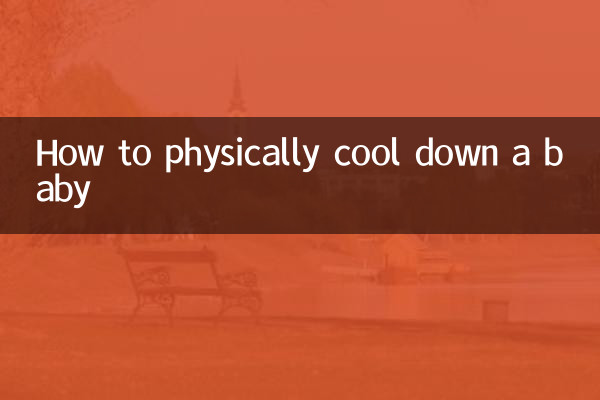How to physically cool down a baby
Recently, infant care has become one of the hot topics, especially how to physically cool infants safely and effectively. Many new parents feel at a loss when facing a baby with a fever, so it is important to master the correct physical cooling methods. The following are the physical cooling methods and related data for infants that have been hotly discussed on the Internet in the past 10 days to help parents scientifically deal with infant fever.
1. Common methods of physical cooling of infants

The following are some of the most discussed physical cooling methods for infants on the Internet for parents’ reference:
| method | Operation steps | Things to note |
|---|---|---|
| Wipe with warm water | Wet a towel with warm water at 32-34°C and gently wipe the baby's neck, armpits, groin and other areas where large blood vessels are distributed | Avoid using alcohol or ice water, which may irritate the skin or cause chills |
| warm bath | Soak the baby in warm water around 37°C for 5-10 minutes | The water temperature should not be too low to prevent the baby from getting cold; dry the body promptly after bathing |
| antipyretic patch | Place the antipyretic patch on the baby's forehead or neck | Choose baby-specific antipyretic patches to avoid allergies; replace them every 4-6 hours |
| reduce clothing | Reduce baby clothing appropriately and maintain indoor ventilation | Avoid over-swaddling, but also prevent your baby from getting cold |
2. Body temperature standards for infant fever
Understanding the temperature standard for a baby's fever is the key to determining whether physical cooling is needed. The following is a classification of baby body temperature:
| body temperature range | Fever level | Recommended actions |
|---|---|---|
| 36.5-37.5℃ | normal body temperature | No special treatment required, just keep observing |
| 37.5-38℃ | low fever | Appropriate physical cooling and drinking more water |
| 38-39℃ | moderate fever | Mainly physical cooling, seek medical treatment if necessary |
| Above 39℃ | high fever | Seek medical attention immediately and take medication as directed |
3. Precautions for physical cooling
When physically cooling babies, parents should pay attention to the following:
1.Avoid using alcohol wipes: Alcohol may be absorbed through the skin, causing alcohol poisoning in infants.
2.Do not use ice packs: Ice application may cause the blood vessels in the baby's skin to constrict, which is not conducive to heat dissipation.
3.Monitor the baby closely: If the baby develops symptoms such as listlessness, refusal to eat, or convulsions, seek medical attention immediately.
4.Stay hydrated: Babies are prone to dehydration when they have a fever, so the frequency of feeding or watering should be increased appropriately.
5.Suitable ambient temperature: Keep the indoor temperature at 24-26℃ and the humidity at 50%-60%.
4. When Do You Need Medical Treatment?
The baby should be taken to the doctor immediately if:
1. The body temperature of babies under 3 months old exceeds 38°C.
2. Fever persists for more than 24 hours without relief.
3. Accompanied by other symptoms, such as vomiting, diarrhea, rash, etc.
4. The baby is in poor mental state, refuses to eat or cries incessantly.
5. Severe symptoms such as convulsions or shortness of breath occur.
5. Summary of recent hot discussions
According to the network data of the past 10 days, the following are the hot discussion topics about physical cooling of infants:
| topic | Discussion popularity | Main content |
|---|---|---|
| The trade-off between physical cooling and drug cooling | high | Discuss when to use physical cooling and when to use antipyretics |
| Safety of traditional methods of reducing fever | middle | Analyze the scientific basis and potential risks of traditional antipyretic methods |
| Cooling methods for babies of different ages | high | Comparing differences in physical cooling in newborns and older infants |
| Selection and use of antipyretic patches | middle | Discuss the advantages and disadvantages of various brands of antipyretic patches |
Conclusion
Fever in infants is a common phenomenon, but parents need to deal with it scientifically. Physical cooling is one of the safe and effective ways to reduce fever, but it requires the correct method and timing. Hopefully the structured data and practical advice provided in this article will help parents better care for their febrile infants. Remember, when you are unsure about your baby's condition, prompt medical attention is the safest option.

check the details

check the details